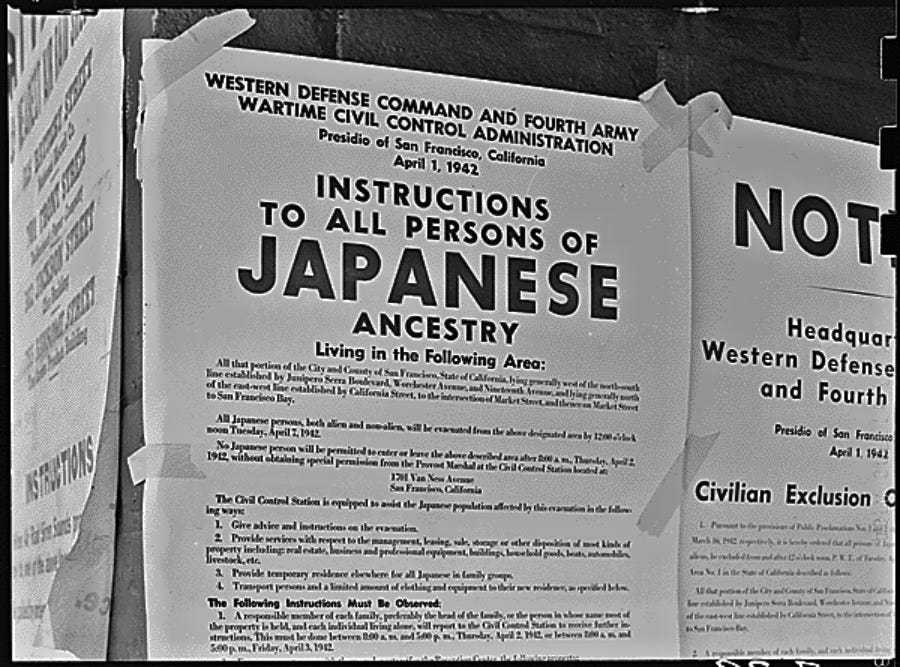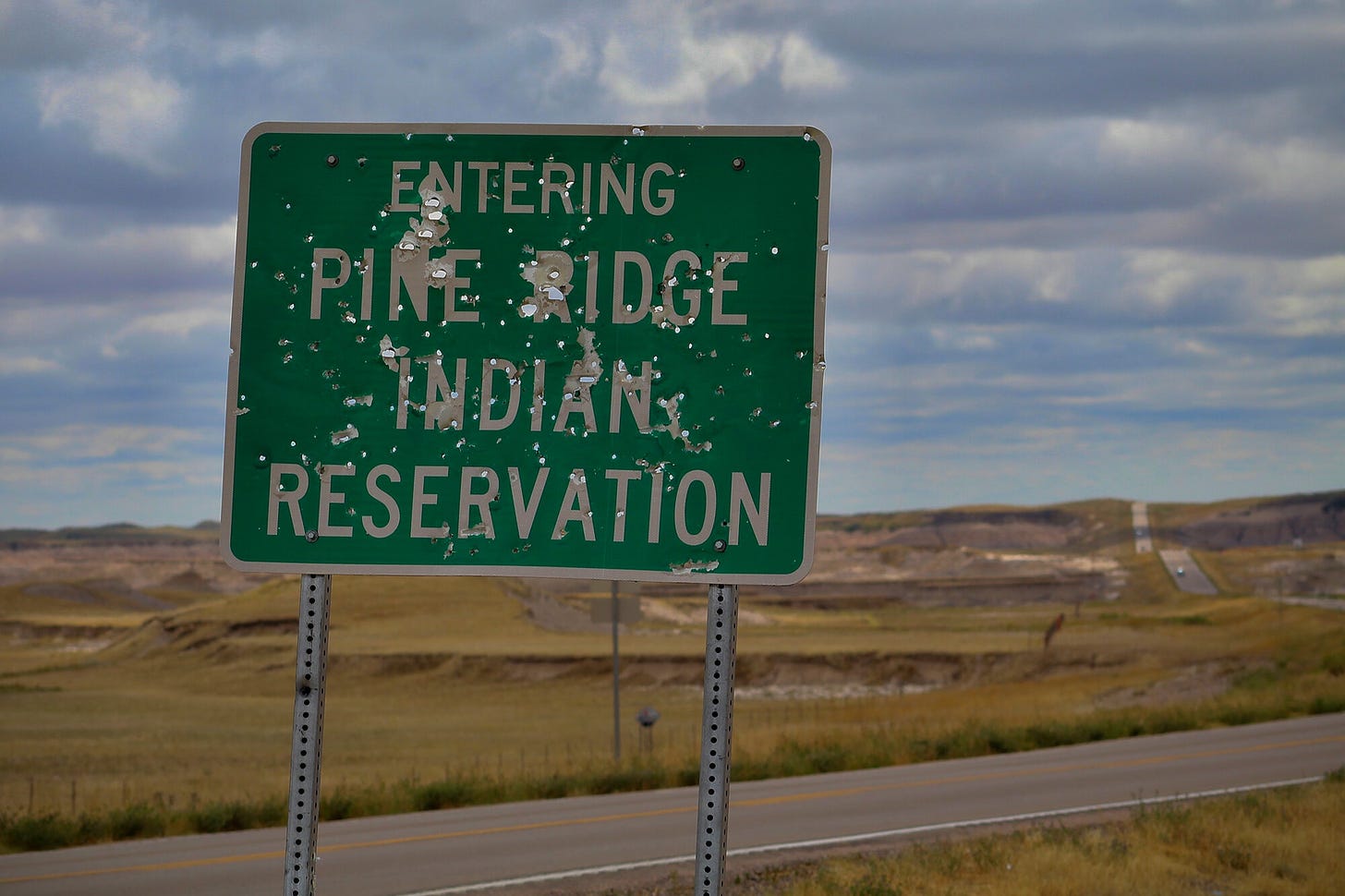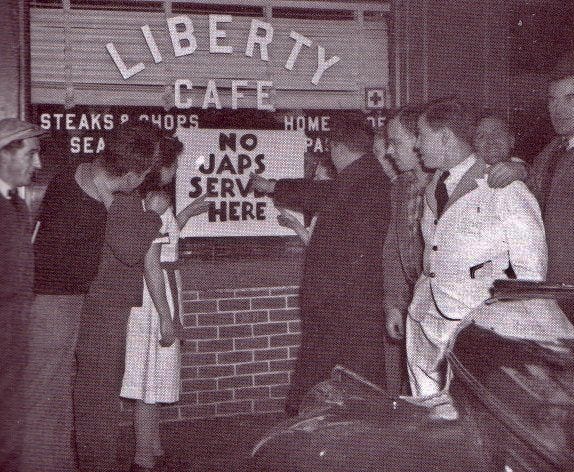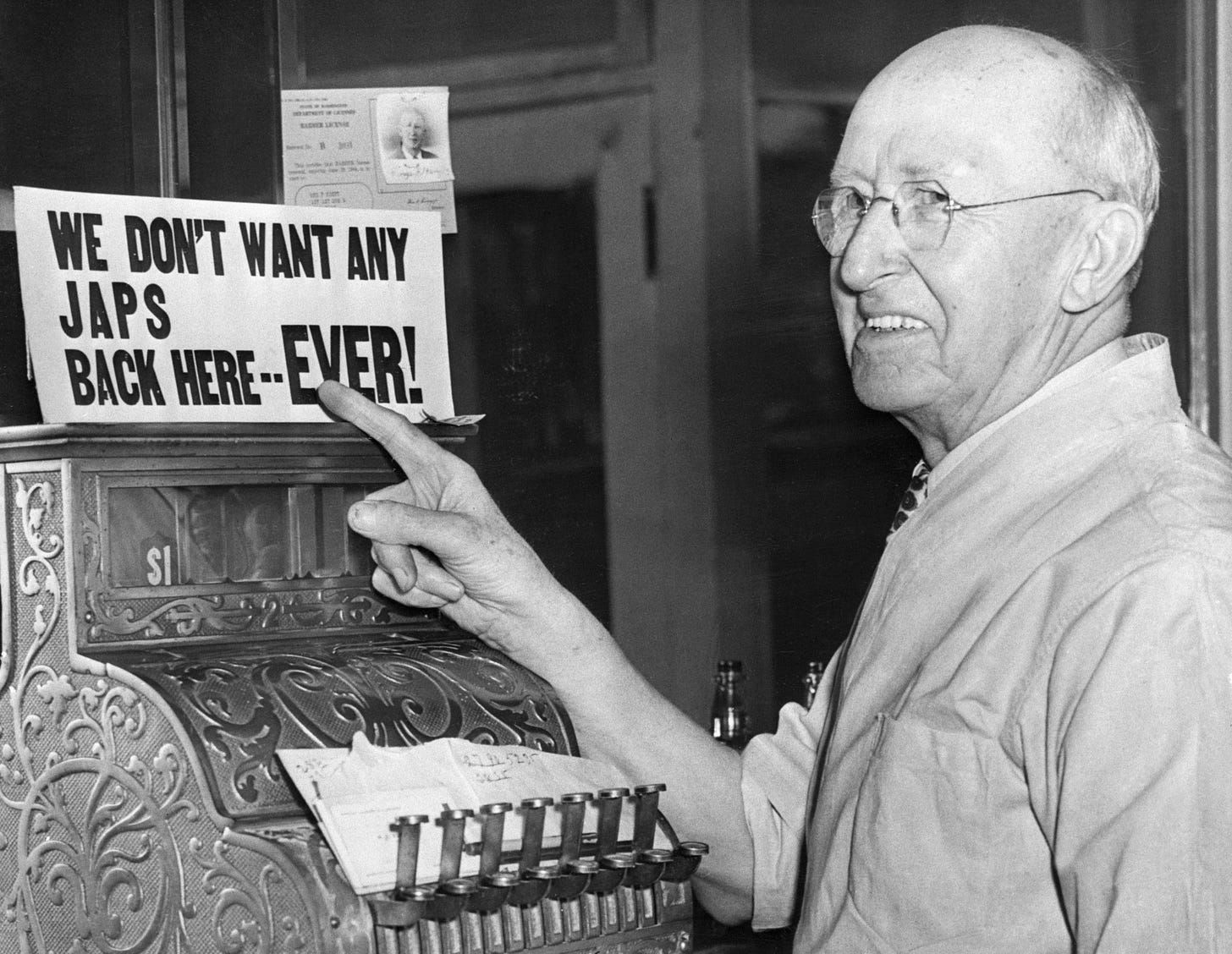This is not an article about Indian Reservations — but it could be. That concept broke new ground in terms of domination and, as Nazi Germany initiated its plans of conquest in Europe, it became their playbook.
“Hitler took note of the indigenous people of the Americas,” notes author Ward Churchill, “specifically within the area of the United States and Canada, and used the treatment of the native people, the policies and processes that were imposed upon them, as a model for what he articulated as being the politics of living space.”
In essence, writes Ward Churchill, “Hitler took the notion of a drive from east to west, clearing the land as the invading population went and resettling it with Anglo-Saxon stock as the model by which he drove from west to east into Russia — displacing, relocating, dramatically shifting, or liquidating a population to clear the land and replace it with what he called superior breeding stock. He was very conscious of the fact that he was basing his policies on the prior experiences of the Anglo-American population in the area north of the Rio Grande River.”
So, yeah, there’s that and I will focus more on it at some point. For this particular article, the spotlight is aimed at the “good guys” who were allegedly fighting a war against racism in the 1940s.
On February 19, 1942, Franklin Delano Roosevelt signed Executive Order 9066 giving the army the unrestricted power to arrest — without warrants, indictments, or hearings — every Japanese-American on a 150-mile strip along the West Coast (roughly 110,000 men, women, and children) and transport them to internment camps in Colorado, Utah, Arkansas, and other interior states to be kept under prison conditions. This order was upheld by the Supreme Court and the Japanese-Americans remained in custody for over three years.
Thanks to an unending wave of anti-Japan propaganda, there was little public debate over this immoral crime. In fact, in 1942, a Los Angeles Times writer defended the forced relocations by explaining to his readers that “a viper is nonetheless a viper wherever the egg is hatched — so a Japanese-American, born of Japanese parents, grows up to be a Japanese, not an American.” In nearby countries, sentiments ran along these same lines, as historian Daniel S. Davis reports:
“Canada enacted similar removal and internment programs. Many Latin American countries were shaken by anti-Japanese riots. Some shipped their Japanese people to the United States at the urging of Washington. They were held in the camps our government set up. Ironically, after the war ended, the U.S. government tried to deport these Latin American Japanese on the grounds that they had entered the country without passports or official visas.”
The Canadian government used the War Measures Act to detain and dispossess more than 90 percent of Japanese Canadians living in British Columbia. Roughly 21,000 people were interned without charges for the duration of the war. To fund this totalitarian salvo, the internees had their homes and businesses sold off by the Canadian government.
Life in the internment camps entailed cramped living spaces with communal meals and bathrooms. The one-room apartments measured 20 by 20 feet and none had running water. The internees were allowed to take along “essential personal effects” from home but were prohibited from bringing razors, scissors, or radios. Outside the shared wards were barbed wire, guard towers with machine guns, and searchlights. The atmosphere was often charged with a hostile discomfort.
Anger and disillusionment grew and these emotions led to tension and sometimes violence. On December 5, 1942, a scuffle between internees led to the U.S. military police firing shots into the crowd — killing one Japanese-American man, Jimmy Ito.
There were those who defied relocation. Fred Korematsu remained in San Francisco with his Caucasian girlfriend until he was arrested and jailed. It was then that he met with an ACLU lawyer and decided to challenge the constitutionality of the internment camps. He lost when the Supreme Court upheld the decision in December 1944.
Justice Frank Murphy, expressing a minority opinion, dissented on the Orwellian grounds that since the camps were “an obvious racial discrimination, the order deprives all those within its scope of equal protection of the laws guaranteed by the Fifth Amendment.”
Re-read that a few times before you mention The Land of the Free™ again.
While 110,000 Japanese-Americans suffered in prison camps, the U.S. media whipped up a post-Pearl Harbor frenzy of fear on the West Coast. If one were to believe the news reports of the day, it would seem that it was always just a matter of hours until Japanese Zeros would be spotted over Hollywood — or anywhere on the Left Coast.
In January 1942, Edward R. Murrow stirred up fifth-column worries by telling an audience in Seattle that if their city was ever bombed, they would “be able to look up and see some University of Washington sweaters on the boys doing the bombing.”
Despite widespread concerns of Japanese infiltration, an FBI report at the time admitted: “We have not found a single machine gun, nor have we found any gun in any circumstances indicating that it was to be used in a manner helpful to our enemies. We have not found a single camera which we have reason to believe was for use in espionage.”
Although there was never a proven case of any type of sabotage by Japanese-Americans on the West Coast, this did little to ease the minds of men like California Attorney General Earl Warren (later the chief justice of the U.S. Supreme Court). “I believe that we are just being lulled into a false sense of security,” Warren declared, “and that the only reason we haven’t had a disaster in California is because it has been timed for a different date.”
The dislocated Japanese-Americans incurred an estimated loss of $400 million in forced property sales during the internment years and therein may lie a more Machiavellian motivation than sheer race hatred.
“A large engine for the Japanese-American incarcerations was agri-business,” says Michio Kaku, a noted nuclear physicist and political activist whose parents were interned from 1942 to 1946. “Agri-businesses in California coveted much of the land owned by Japanese-Americans.”
A formal apology came to the 60,000 survivors of internment camps in 1990. The U.S. government paid them each $20,000. Two years prior to that, Prime Minister Brian Mulroney apologized on behalf of the Canadian government.
While Yale Law Professor Eugene V. Rostow later called the internment camps “our worst wartime mistake,” historian Howard Zinn pointedly asked: “Was it a ‘mistake’ or was it an action to be expected from a nation with a long history of racism and which was fighting a war, not to end racism, but to retain the fundamentals of the American system?”
Keep yer guard up…










Excellent essay. Would people be put in camps in America and Canada today based on the wars against those not vaxed, Christians, election "questioners ", etc.
ABSOLUTELY!
Canada had history. They also interned Ukrainians and others during WW1.
I don't know why people think we're so nice